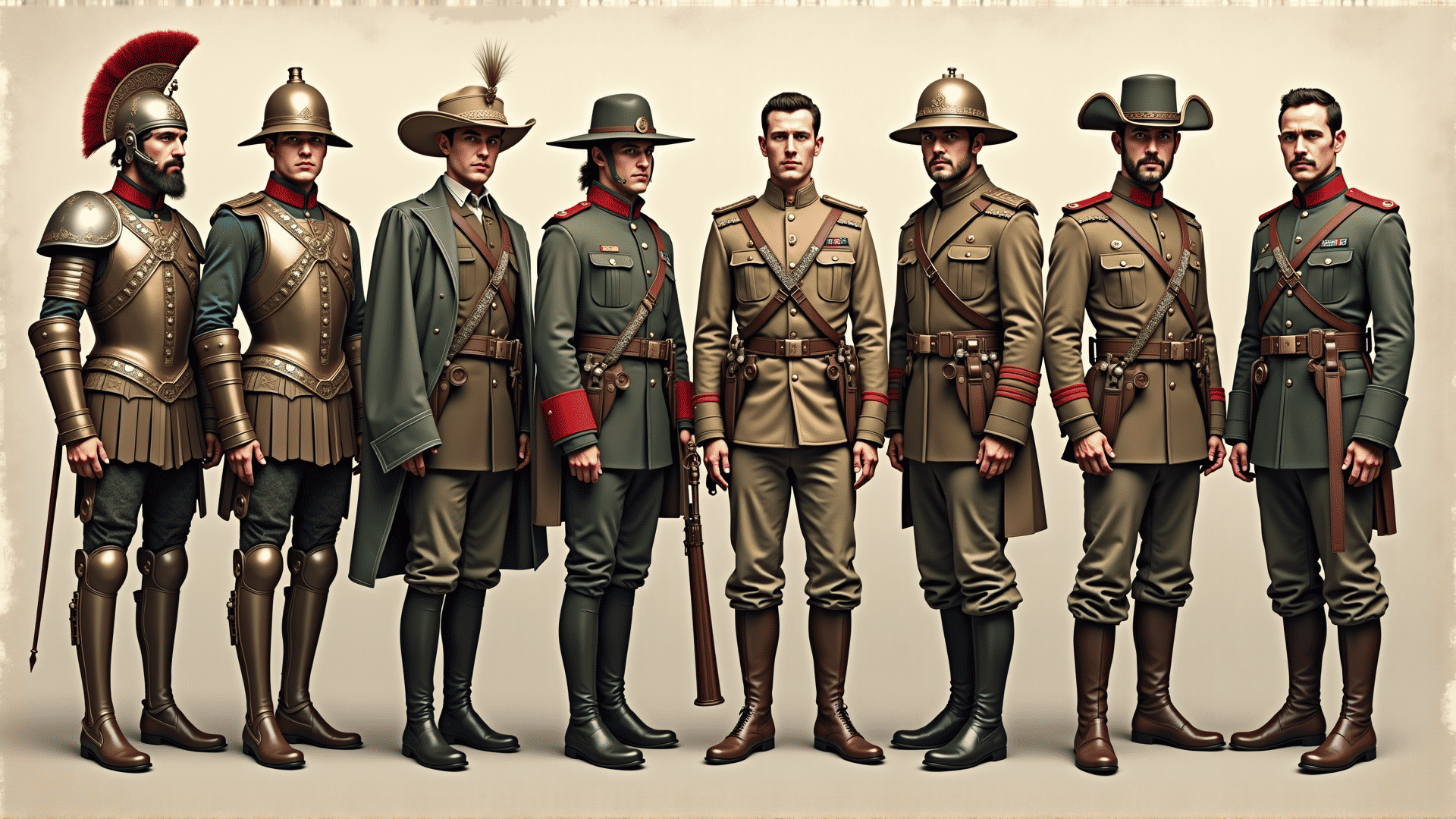Military fashion is a fascinating reflection of history, innovation, and societal change. Its evolutionary journey from strictly functional attire to a popular fashion statement provides intriguing insights into how necessity, practicality, and style can intersect. This evolution has seen military apparel transition from the battlefields to the runways and streets, influencing civilian wardrobe choices and becoming a mainstay in the fashion world.
The roots of military fashion are steeped in necessity. In earlier times, uniforms were designed primarily for utility and identification. Soldiers needed durable, weather-appropriate attire that allowed for movement and endurance in varying climates. For example, Roman soldiers early on wore tunics and armor that not only protected them in battle but also unified the army, providing a sense of camaraderie and order.
As warfare evolved, so too did military uniforms. The introduction of gunpowder in the 16th century changed battlefield dynamics and subsequently influenced military attire. Functionality dictated the need for new fabrics and construction techniques, leading to uniforms that could withstand harsh conditions, carry essential supplies, and adapt to technological advancements. During the Napoleonic era, colorful and elaborate uniforms gave way to more somber palettes designed for camouflage and stealth, laying the groundwork for one of military fashion's enduring legacies – the use of color and pattern for concealment.
The two World Wars in the 20th century accelerated changes in military attire, introducing innovations that continue to resonate in modern fashion. World War I saw the introduction of the trench coat, originally designed for British officers as lightweight rainproof outerwear. The trench coat's sleek lines and practical design quickly translated into civilian fashion and remains timeless in contemporary wardrobes. Similarly, the bomber jacket, initially crafted for pilots in World War II, became a fashion staple renowned for its casual yet robust aesthetic.
Post-war periods often see veterans carrying their service experiences into civilian life, including their attire. This cultural transfer of military aesthetics into mainstream fashion became particularly pronounced during the 20th century. The 1960s and 70s, with their anti-establishment movements, celebrated military surplus clothing as a countercultural symbol, repurposing items like army jackets and cargo pants into everyday wear. This era also sparked the emergence of camouflage patterns in non-military clothing lines, challenging traditional boundaries and redefining notions of individuality and rebellion.
Today, military fashion remains influential, evident in ready-to-wear collections and streetwear. Designers frequently draw inspiration from military themes, incorporating elements like epaulettes, khaki hues, and distinctive tailoring. The militaristic "utility" style, emphasizing practical elements such as multiple pockets and durable fabrics, continues to capture the imagination of fashionistas worldwide, blending effortlessly with urban and casual styles.
However, military fashion's significance extends beyond mere aesthetics. It serves as a chronicle of past and current societal values, reflecting shifts in gender roles, geopolitical trends, and cultural identity. The recent prominence of unisex military-inspired clothing underscores evolving perceptions of gender fluidity and inclusivity. Meanwhile, sustainable fashion movements look to military apparel's emphasis on durability and functionality as models for longevity in clothing.
The saga of military fashion is a testament to its perpetual cycle of innovation, adaptation, and reinterpretation. As society continues to evolve, so too will the narratives stitched into the fabric of military-inspired attire. What began as functional necessity has burgeoned into a potent form of self-expression, influencing global fashion and challenging conventions. Whether embraced for its practicality or reimagined as an artistic statement, military fashion remains a compelling narrative woven into the tapestry of human history.
